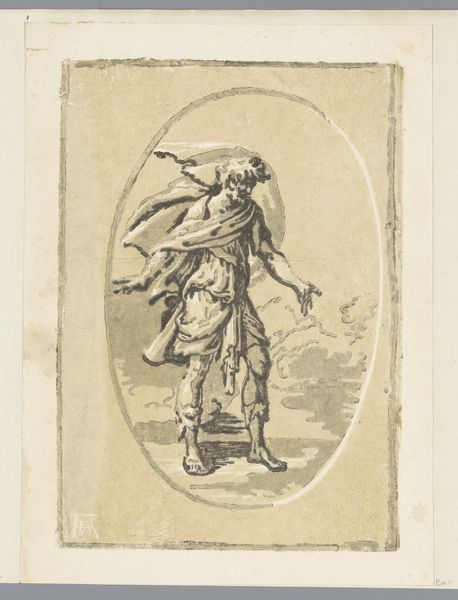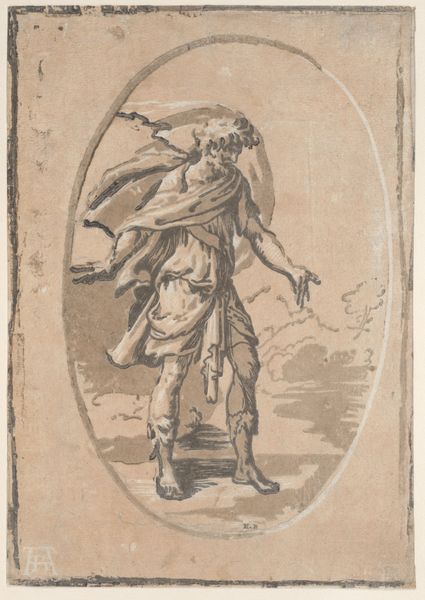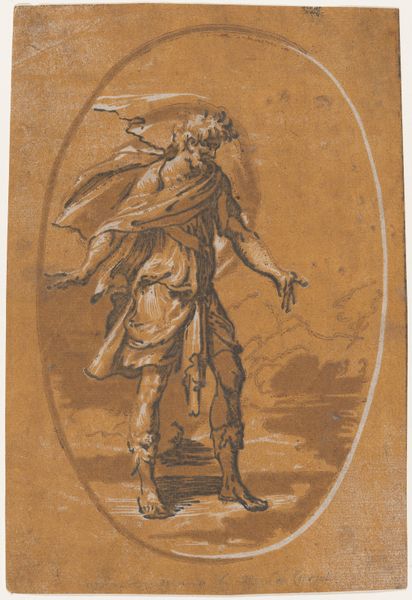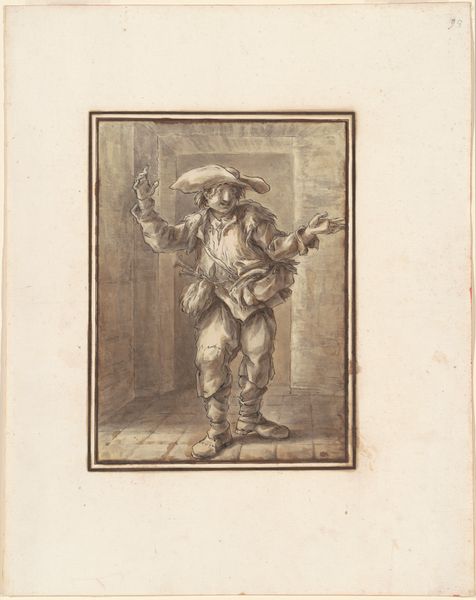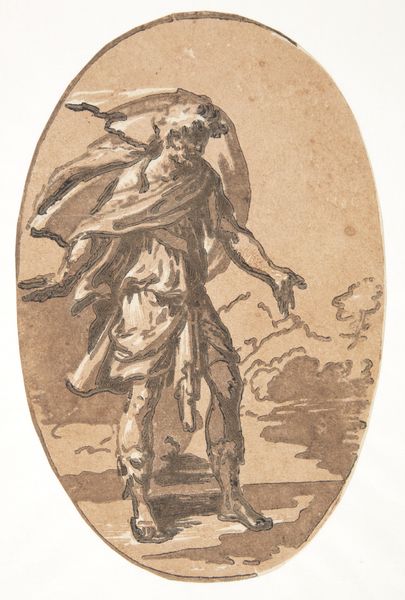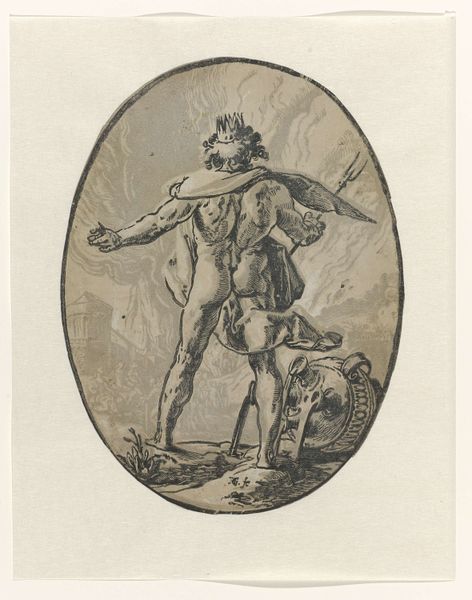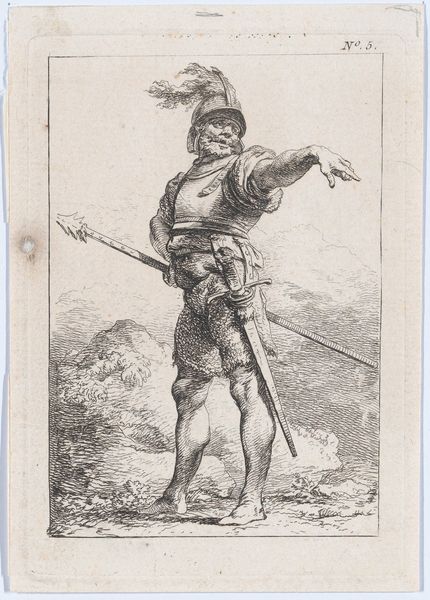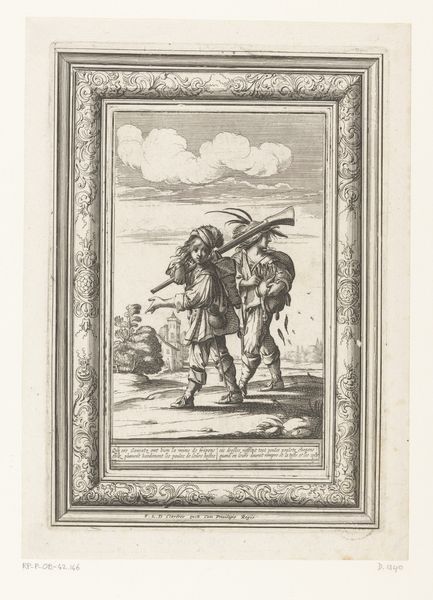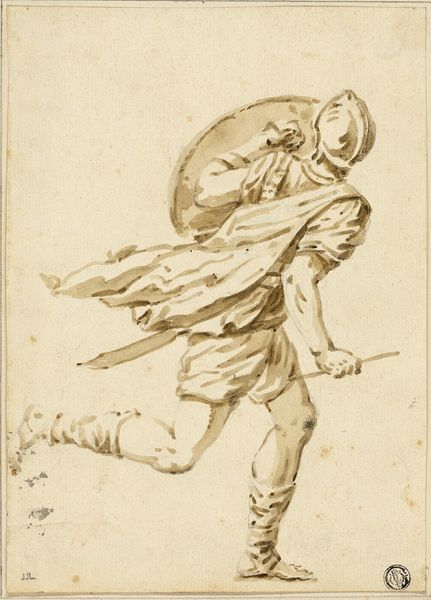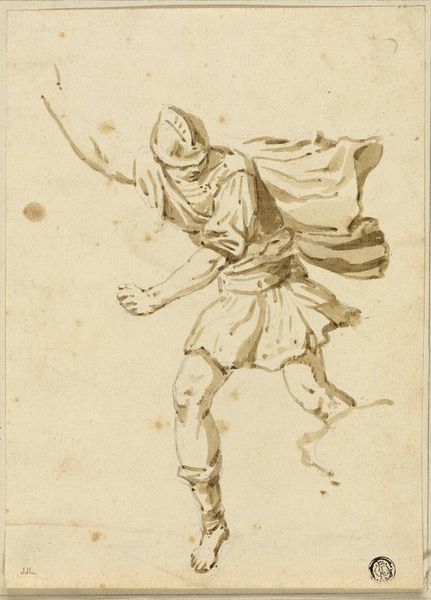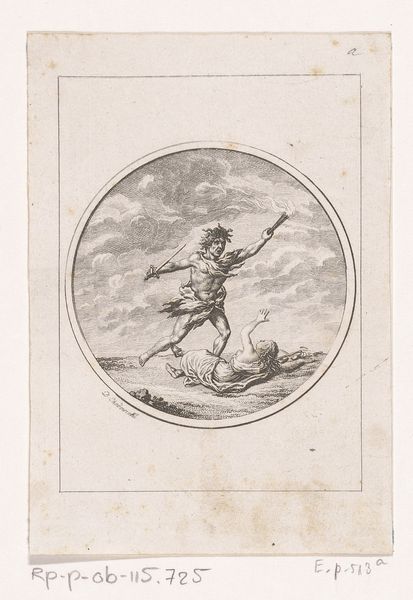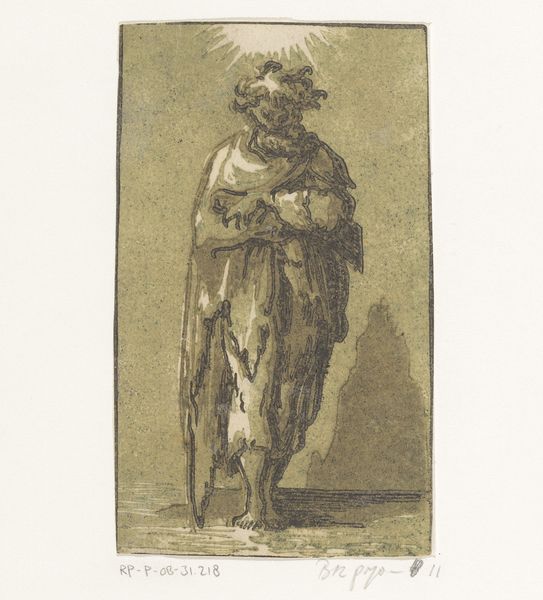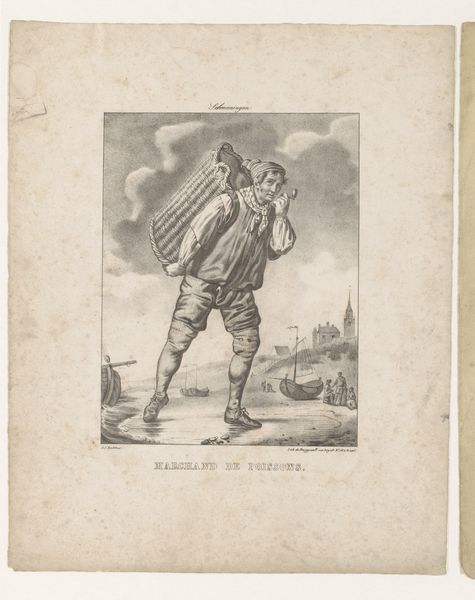
drawing, coloured-pencil
#
portrait
#
drawing
#
coloured-pencil
#
figuration
#
11_renaissance
#
coloured pencil
#
academic-art
Dimensions: Sheet: 9 1/8 × 6 1/16 in. (23.2 × 15.4 cm) trimmed
Copyright: Public Domain
Curator: We're looking at "Olympus (Surprise)," a colored pencil drawing likely created between 1535 and 1545 by Niccolò Vicentino. Editor: My first thought is how dynamic this feels. The figure's posture, the flowing cloak, there’s an intense movement and drama here. I can’t help but feel that this scene must contain symbolic intent. Curator: Vicentino was a printmaker, deeply involved in the reproduction and dissemination of images. This piece gives insight into that practice; the visible lines and hatching, the artist's hand apparent. I’m also drawn to the use of colored pencil in a time we often associate with pens, inks, and perhaps the emerging oil techniques. It suggests exploration, and experimentation with materials more commonly found in lower or commercial artwork settings. Editor: Yes, I noticed those lines too. Notice his gesture – an open hand. This calls forth the symbol of the *Adventus*, when triumphant rulers appear. It carries themes of power and majesty and may imply that the artist intended that for this figure too. He almost expects an arrival, a *Parousia*. Curator: Power is interesting in this context. To me, that slightly marred surface and visible process highlight the labor that goes into these displays of power. This feels more grounded than a perfect presentation; we are reminded that there is real material involved in representing even divine things. Editor: Yet the figure still retains all its godly markers. Note the figure's contrapposto, its dynamic shape against its neutral backdrop – a visual reference to Mannerist canons for portraying heroes. It does call to mind other representations of gods throughout history, drawing a continuity, almost creating a visual memory of the triumph inherent to Olympus. Curator: And yet, consider who controlled access to such representations! It was often a collaboration involving patrons, artisans, and printmakers like Vicentino who, with colored pencil and line, made visual spectacle widely available, shifting not only how these images were consumed, but by whom. Editor: I see it too, almost an iconography of making visible the hidden symbolic meaning; where cultural power and spiritual awe find its match in dramatic imagery. Thank you for pointing that out to me. Curator: And likewise, your interpretation brought a level of historical perspective into light – thanks for that!
Comments
No comments
Be the first to comment and join the conversation on the ultimate creative platform.
